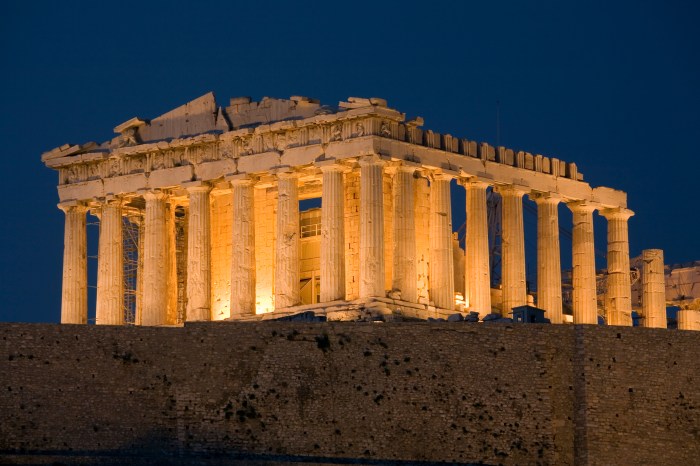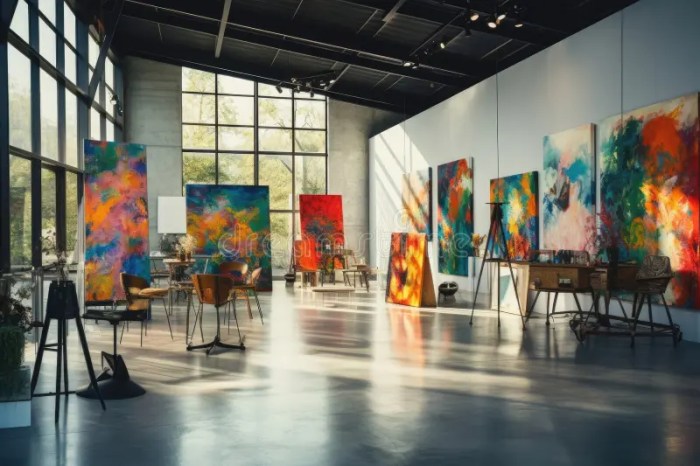
Cultural art and architecture travel offers a unique blend of exploration and immersion, transcending the typical tourist experience. It’s about connecting with a destination on a deeper level, understanding its history, appreciating its artistic heritage, and experiencing the cultural nuances that shape its identity. This journey isn’t just about ticking off landmarks; it’s about engaging with the stories woven into the very fabric of a place, from ancient temples to modern masterpieces.
This exploration delves into the motivations behind this specialized travel niche, comparing it to other forms of tourism and highlighting the unique rewards it offers. We’ll examine popular destinations, the impact of cultural preservation on the travel experience, and the exciting possibilities of combining cultural immersion with other travel themes, such as wildlife watching or culinary adventures. Finally, we’ll discuss sustainable and responsible travel practices to ensure the longevity of these invaluable cultural treasures.
Defining Cultural Art and Architecture Travel
Cultural art and architecture travel represents a specific niche within the broader tourism sector, focusing on the exploration and appreciation of a destination’s artistic, historical, and architectural heritage. It goes beyond simply visiting famous landmarks; it involves engaging deeply with the cultural context surrounding these sites, understanding their significance within the narrative of a place, and often participating in related cultural activities.This type of travel is driven by a profound interest in history, art, and culture.
Travelers are motivated by a desire to learn, to understand different perspectives, and to immerse themselves in the unique character of a destination. They expect authentic experiences that provide insights into the local way of life, artistic traditions, and architectural styles. The focus is on intellectual and aesthetic stimulation, rather than solely on relaxation or adrenaline-fueled activities.
Motivations and Expectations of Cultural Art and Architecture Travelers
Individuals choosing this travel style are typically seeking more than just a superficial glimpse of a location. They are driven by intellectual curiosity and a desire for enriching experiences. This might involve attending a local performance of traditional music, taking a workshop on a specific craft, visiting artist studios, or engaging with local artisans. Their expectations include gaining a deeper understanding of the history and cultural significance of the places they visit, experiencing authentic cultural interactions, and potentially acquiring new knowledge and skills.
For example, a traveler visiting Florence might not only see the Duomo but also take a sculpting class, visit a museum dedicated to Renaissance art, and perhaps even attend an opera performance.
Comparison with Other Travel Types
Cultural art and architecture travel differs significantly from other tourism segments. Unlike adventure tourism, which emphasizes physical challenges and outdoor activities, cultural tourism prioritizes intellectual and aesthetic engagement. It contrasts with relaxation-focused vacations, which emphasize rest and recuperation, by actively involving the traveler in learning and cultural exchange. For instance, while an adventure tourist might prioritize trekking in the Himalayas, a cultural art and architecture traveler might prefer exploring the ancient monasteries and temples found in the same region, focusing on their artistic and historical value.
Similarly, a relaxation-focused vacation might involve lounging on a beach, while a cultural trip might involve exploring historical sites and museums in a city.
Popular Destinations for Cultural Art and Architecture Travel
Exploring the world’s rich tapestry of cultural art and architecture offers unparalleled opportunities for enriching travel experiences. These journeys delve into the heart of human creativity and ingenuity, revealing stories etched in stone, paint, and design across diverse civilizations and eras. From ancient wonders to modern marvels, each destination holds unique artistic and architectural treasures waiting to be discovered.
Five globally recognized destinations stand out for their exceptional contributions to cultural art and architecture. These locations boast a remarkable concentration of significant historical sites, museums, and artistic movements, providing an immersive and unforgettable experience for travelers.
Top Five Cultural Art and Architecture Destinations
The following table highlights five leading destinations, each renowned for its distinct artistic and architectural heritage. The selection considers both the quantity and quality of significant landmarks, as well as the overall cultural impact and accessibility for travelers.
| Destination | Description | Notable Landmark | Architectural Style Example |
|---|---|---|---|
| Italy | A cradle of Western civilization, Italy boasts a wealth of Roman ruins, Renaissance masterpieces, and Baroque architecture. Its artistic heritage spans millennia, influencing global art and design. | Colosseum, Rome | Romanesque |
| Greece | Ancient Greece laid the foundations for Western art and architecture, with its classical styles influencing countless structures and artistic movements. The country is dotted with ancient ruins and stunning landscapes. | Acropolis, Athens | Classical Greek |
| Japan | A land of ancient temples, serene gardens, and modern architectural marvels, Japan offers a captivating blend of traditional and contemporary aesthetics. Its unique artistic traditions are globally recognized. | Kinkaku-ji (Golden Pavilion), Kyoto | Japanese Zen Garden Design |
| Egypt | Home to some of the world’s oldest and most awe-inspiring monuments, Egypt’s ancient civilization left an indelible mark on architecture and art. The pyramids and temples remain iconic symbols of human ingenuity. | Pyramids of Giza | Ancient Egyptian |
| Mexico | Mexico’s rich pre-Columbian heritage, combined with its colonial past and vibrant contemporary art scene, provides a diverse range of architectural and artistic experiences. | Teotihuacan Pyramids | Pre-Columbian |
Classical Greek Architecture
Classical Greek architecture, exemplified by structures like the Parthenon, is characterized by its emphasis on harmony, balance, and proportion. Developed during the 5th and 4th centuries BC, this style utilized standardized elements like columns (Doric, Ionic, and Corinthian orders), entablatures, and pediments to create visually stunning and structurally sound buildings. The use of mathematical ratios, such as the Golden Ratio, contributed to the aesthetic appeal and sense of perfection inherent in Classical Greek designs.
These principles of order and symmetry had a profound and lasting influence on Western architecture for centuries to come, inspiring countless neoclassical buildings and shaping our understanding of architectural beauty.
Imagine a temple, its facade composed of evenly spaced Doric columns supporting a massive entablature, a triangular pediment adorned with intricate sculptures depicting scenes from mythology. This is a visual representation of the key features of Classical Greek architecture – its emphasis on symmetry, the use of distinct column orders, and the integration of sculpture to enhance the overall aesthetic impact.
The historical context lies in the flourishing of Greek democracy and the belief in human reason and perfection, reflected in the idealized forms and balanced proportions of their buildings. These structures were not merely functional but also served as powerful symbols of civic pride and religious devotion.
The Impact of Cultural Art and Architecture on Travel Experiences
Cultural art and architecture significantly shape a traveler’s experience, moving beyond mere sightseeing to create a deeper connection with the destination. The aesthetic appeal of buildings, the stories woven into artwork, and the tangible presence of history all contribute to a more immersive and memorable journey. This impact extends to the economic and social well-being of the locations themselves, fostering sustainable tourism and cultural preservation.The influence of local art and architecture profoundly affects a traveler’s perception of a destination.
A city’s architectural style – be it the ornate Baroque buildings of Rome, the sleek modern structures of Dubai, or the traditional earthen architecture of rural villages in Morocco – immediately sets the tone and mood. The artistry displayed in local crafts, religious iconography, and public art installations provides further insight into the culture, values, and history of the place.
These elements collectively contribute to the overall atmosphere and the traveler’s emotional response to the destination, influencing their overall satisfaction and creating lasting memories. For example, experiencing the intricate details of a Mughal palace in India elicits a very different feeling compared to exploring the minimalist design of a contemporary art museum in Scandinavia. These differing aesthetic experiences shape the narrative of the trip in the traveler’s mind.
Cultural Preservation Efforts and Tourism
Effective cultural preservation efforts directly enhance the tourism sector. Preserving historical sites and architectural landmarks attracts visitors interested in cultural heritage tourism. The restoration of ancient ruins, such as the Angkor Wat temple complex in Cambodia, not only protects invaluable historical assets but also boosts tourism revenue, supporting local communities and stimulating economic growth. Similarly, the preservation of traditional crafts and art forms creates unique opportunities for tourists to engage with local culture, fostering a sense of authenticity and contributing to the economic viability of these practices.
The UNESCO World Heritage sites program serves as a powerful example, showcasing the positive correlation between preservation efforts and increased tourism. Sites recognized by UNESCO receive increased funding, international attention, and visitor numbers, generating economic benefits while simultaneously ensuring the long-term preservation of significant cultural assets.
The Role of Local Artisans and Communities
Local artisans and communities play a vital role in shaping both the cultural landscape and the tourist experience. Their skills and traditions are integral to maintaining the authenticity and uniqueness of a destination. For example, the vibrant textile industry in Oaxaca, Mexico, not only produces beautiful handicrafts but also provides employment and economic opportunities for local communities. Similarly, in many parts of Southeast Asia, traditional dance performances, cooking classes, and craft workshops offer tourists engaging opportunities to interact directly with local artisans and learn about their cultural heritage.
This direct interaction fosters cultural exchange, mutual understanding, and supports the economic sustainability of traditional practices. The involvement of local communities in tourism management ensures that the benefits of tourism are shared equitably, promoting responsible and sustainable development. This participatory approach prevents the commodification of culture and ensures that tourism contributes to the well-being of the local population, preserving their traditions for future generations.
Integrating Other Travel Themes with Cultural Art and Architecture
Cultural art and architecture travel can be significantly enriched by integrating it with other travel themes. This creates more immersive and multifaceted experiences, appealing to a wider range of traveler interests and motivations. By combining interests, travelers can gain a deeper understanding of a destination’s culture and history while simultaneously enjoying other enriching activities.
Religious Pilgrimages and Cultural Art and Architecture
Religious pilgrimages often intersect with cultural art and architecture travel organically. Many sacred sites boast stunning architecture and contain significant works of religious art. For instance, a pilgrimage to Rome might include visits to St. Peter’s Basilica, a masterpiece of Renaissance architecture and home to countless works of art, or the Vatican Museums, housing an unparalleled collection of religious art and artifacts.
Similarly, a pilgrimage to Kyoto, Japan, would encompass visits to ancient temples like Kiyomizu-dera, renowned for its wooden stage and intricate details, and numerous shrines showcasing traditional Japanese architecture and religious iconography. The artistic and architectural merit of these sites enhances the spiritual experience, making the journey more enriching and memorable.
Wildlife Watching and Culturally Significant Sites
Combining wildlife watching with visits to culturally significant sites offers a unique travel experience. For example, a safari in Tanzania could be coupled with visits to ancient ruins like Kilwa Kisiwani, a UNESCO World Heritage site showcasing Swahili architecture, or the Ngorongoro Conservation Area, which also has historical and cultural significance for the Maasai people. Similarly, a trip to Costa Rica to observe wildlife could include visits to ancient indigenous settlements, showcasing traditional architecture and art reflecting the region’s rich cultural heritage.
The juxtaposition of natural beauty and cultural heritage creates a holistic understanding of the destination.
Winter Sports and Local Architecture and Art
Winter sports destinations often offer opportunities to explore local architecture and art. A ski trip to the Swiss Alps could include visits to charming villages with traditional chalets and churches, showcasing unique architectural styles. In Austria, exploring the baroque architecture of Salzburg alongside skiing provides a balanced experience. The contrast between the thrill of winter sports and the serenity of historical sites adds depth to the journey.
Exploring local art galleries and craft shops in these towns further enhances the cultural immersion.
Island Hopping and Local Art and Architecture
Island hopping provides ample opportunities to explore diverse local art and architecture. A trip through the Greek Islands could include visits to ancient ruins like the Acropolis in Athens, exploring the Cycladic architecture of Mykonos, and experiencing the Venetian influences in Crete. Similarly, island hopping in Southeast Asia might include exploring the ancient temples of Angkor Wat in Cambodia, the traditional stilt houses of the villages in Vietnam, and the ornate mosques of Indonesia.
Each island offers unique architectural and artistic expressions reflecting its own distinct cultural heritage.
Voluntourism and Cultural Art and Architecture Preservation
Voluntourism provides a way to actively participate in the preservation or creation of cultural art and architecture. Projects might involve assisting in the restoration of historical buildings, participating in community art projects, or helping to build traditional structures. Organizations like Global Volunteers and Habitat for Humanity offer programs focusing on preserving cultural heritage through community-based projects. These opportunities allow travelers to contribute meaningfully to the preservation of cultural heritage while experiencing a different side of travel.
Photography Tours Focused on Cultural Art and Architecture
Photography tours can be specifically designed to capture the essence of cultural art and architecture. These tours focus on providing unique perspectives and opportunities for capturing stunning images. Examples include guided tours focusing on capturing the light and shadows in ancient Roman ruins, workshops on photographing intricate details in Islamic architecture, or expeditions focused on capturing the essence of traditional Japanese gardens.
The curated experience enhances the photographer’s appreciation for the subject matter.
Festival Travel and Unique Artistic Expressions
Festival travel provides access to unique artistic expressions within specific architectural contexts. Attending the Venice Biennale, an international art exhibition, provides the opportunity to experience contemporary art displayed in historical palazzos. Similarly, attending a traditional music festival in a historic castle in Scotland or a dance festival in a traditional village in Bali provides a unique cultural immersion, highlighting the interplay between art and architecture.
The festival setting adds an energetic dimension to the appreciation of art and architecture.
Desert Expeditions and Unique Architectural Adaptations
Desert expeditions can reveal unique architectural adaptations and artistic expressions developed in response to the harsh environment. Exploring the ancient city of Petra in Jordan, carved into sandstone cliffs, demonstrates impressive architectural feats adapted to the desert landscape. Similarly, exploring traditional adobe architecture in the southwestern United States or the mud-brick houses of the Sahara reveals ingenious building techniques and artistic expressions specific to the desert environment.
The context of the environment enhances the appreciation of the architecture.
Underwater Adventures and Submerged Cultural Heritage
Underwater adventures can uncover submerged cultural heritage and architecture. Exploring ancient submerged cities like Port Royal in Jamaica or exploring shipwrecks reveals historical artifacts and architectural remains, providing a unique perspective on history and culture. These underwater explorations often require specialized training and equipment, adding an element of adventure to the cultural experience. The underwater setting creates a dramatic and unique backdrop for exploring cultural heritage.
Art and Architecture Tours Enhanced by Culinary Experiences
Art and architecture tours can be enhanced by including elements of other travel themes, such as culinary experiences. For example, a tour of Florence, Italy, could incorporate visits to local markets, cooking classes featuring Tuscan cuisine, and wine tasting experiences, all within the context of the city’s rich artistic and architectural heritage. Similarly, a tour of Mexico City could combine visits to ancient Aztec ruins with explorations of local culinary traditions.
The integration of food and drink adds a sensory dimension to the overall experience.
Sustainable and Responsible Cultural Art and Architecture Travel

Sustainable and responsible cultural art and architecture travel is crucial for preserving the integrity of historical sites, supporting local communities, and ensuring the long-term enjoyment of these invaluable resources. It moves beyond simply visiting these places and actively contributes to their continued existence and vibrancy. This involves minimizing the negative impact of tourism while maximizing the positive benefits for both the environment and the people who live in these culturally rich areas.The importance of sustainable practices cannot be overstated.
Unsustainable tourism can lead to damage to fragile artifacts, overcrowding, pollution, and the erosion of local traditions. Responsible tourism, in contrast, fosters a deeper appreciation for the cultural heritage and ensures its preservation for future generations. It encourages mindful interaction with the environment and the local communities, promoting mutual respect and understanding.
Responsible Travel Guidelines for Tourists
Prioritizing responsible travel involves a conscious effort to minimize your environmental footprint and positively impact the local communities you visit. This includes being mindful of your actions and choices, and respecting the cultural norms and sensitivities of the places you explore.
- Respect Local Customs and Traditions: Dress modestly when visiting religious sites, learn basic phrases in the local language, and be mindful of local customs regarding photography and interaction with people.
- Support Local Businesses: Opt for locally owned hotels, restaurants, and tour operators. This directly benefits the local economy and helps preserve cultural traditions.
- Minimize Your Environmental Impact: Reduce your carbon footprint by choosing sustainable transportation options, reducing waste, and conserving water and energy.
- Respect Historical Sites: Do not touch or climb on artifacts, stay on designated paths, and avoid leaving any litter behind. Adhere to all posted rules and regulations.
- Be a Responsible Photographer: Avoid intrusive photography, especially of people without their permission. Respect the privacy and dignity of individuals.
- Learn About the Culture Before You Go: Understanding the history and significance of the sites you plan to visit will enhance your experience and allow you to engage more respectfully.
Economic and Social Benefits of Supporting Local Communities
Supporting local communities through responsible tourism practices generates substantial economic and social benefits. This form of tourism acts as a powerful catalyst for sustainable development, creating opportunities for economic growth and social progress within the communities themselves.For example, consider a small village renowned for its traditional handcrafts. Tourists who purchase directly from local artisans, rather than buying mass-produced souvenirs, provide a vital income stream for these craftspeople, allowing them to continue their traditions and sustain their livelihoods.
This direct economic support helps to preserve cultural heritage and prevents the loss of traditional skills. Furthermore, responsible tourism can lead to the creation of new jobs in hospitality, transportation, and guiding, further boosting the local economy and improving the quality of life for residents. The positive social impacts include a greater sense of community pride, improved infrastructure, and increased opportunities for education and healthcare.
The preservation of cultural heritage also becomes a significant source of community identity and cohesion, attracting investment and strengthening the social fabric. A prime example is the success of community-based tourism initiatives in many parts of the world, where local communities directly manage and benefit from tourism activities. This ensures that the economic benefits are distributed equitably, promoting sustainable and inclusive growth.
The Future of Cultural Art and Architecture Travel

The next five years promise a dynamic shift in cultural art and architecture travel, driven by technological advancements and evolving traveler preferences. We can expect a convergence of physical and digital experiences, prioritizing sustainability and personalization, ultimately making cultural immersion more accessible and engaging than ever before.The integration of technology will be paramount in shaping the future of this sector.
This will not simply be about convenience but about fundamentally altering the way we interact with cultural sites and artifacts.
Emerging Trends in Cultural Art and Architecture Travel
Several key trends are poised to significantly impact the cultural art and architecture travel landscape. Increased personalization, focusing on niche interests and bespoke itineraries, will become the norm. For example, instead of generic “Rome in 3 days” tours, travelers will increasingly seek out curated experiences focusing on specific artistic movements, like Baroque architecture or Renaissance sculpture, tailored to their individual passions.
Furthermore, a growing emphasis on slow travel and immersive experiences will see a rise in longer stays at fewer destinations, allowing for deeper engagement with the local culture and art scene. This could involve workshops with local artisans, private tours led by experts, or participation in cultural festivals. Finally, sustainable and responsible travel practices will become increasingly important, with travelers actively seeking out eco-friendly accommodations and tour operators committed to preserving cultural heritage.
We can already see this trend in the increasing popularity of eco-lodges near historical sites and the rise of community-based tourism initiatives.
Technological Enhancements to Cultural Art and Architecture Travel Experiences
Technology offers exciting possibilities for enhancing the traveler experience. Augmented reality (AR) apps can overlay digital information onto real-world locations, providing context and insights about historical buildings, artwork, or archaeological sites. Imagine pointing your phone at a Roman amphitheater and seeing a 3D reconstruction of it in its prime superimposed on the current structure. Virtual reality (VR) offers even more immersive experiences, allowing travelers to “visit” sites that are inaccessible or too fragile for physical visits, such as ancient ruins or delicate frescoes.
AI-powered chatbots can provide personalized recommendations and answer traveler queries in real-time, creating a seamless and informed journey. Furthermore, personalized digital guides can offer tailored information based on individual preferences and interests, adapting the experience dynamically to each traveler’s needs.
The Role of Digital Platforms and Virtual Tours in Promoting and Experiencing Cultural Art and Architecture
Digital platforms are already playing a significant role in promoting cultural destinations and providing virtual previews of experiences. High-quality virtual tours, often using 360° photography and videography, allow potential travelers to explore sites remotely, fostering interest and driving bookings. Social media platforms are also crucial for showcasing the beauty and uniqueness of cultural destinations, inspiring travel decisions through visually engaging content.
Interactive websites and apps provide detailed information about cultural sites, historical contexts, and practical travel information. The ability to book tours, accommodations, and transportation directly through these platforms streamlines the planning process, making cultural art and architecture travel more accessible. Moreover, online communities and forums allow travelers to share their experiences, recommendations, and insights, shaping the perception and popularity of various destinations.
For example, the success of platforms like Airbnb Experiences demonstrates the power of digital platforms in connecting travelers with local experts and unique cultural experiences.
Conclusion
Ultimately, cultural art and architecture travel provides an enriching and transformative experience. By engaging with the artistic and architectural heritage of a destination, travelers gain a profound understanding of its history, people, and cultural identity. Responsible tourism practices are crucial to preserving these irreplaceable assets for future generations, ensuring that the wonder and inspiration they offer continue to resonate for years to come.
The journey of discovery extends beyond the physical; it’s a journey into the heart and soul of a destination, leaving a lasting impact on both the traveler and the community visited.
FAQ Compilation
What are the best times of year to travel for optimal weather and fewer crowds?
The best time varies greatly by destination. Research the specific climate and peak tourist seasons for your chosen locations to find the ideal time to visit.
How can I find affordable accommodation while traveling focused on art and architecture?
Consider staying in guesthouses, hostels, or Airbnb options outside of major city centers for more budget-friendly accommodation. Booking in advance can also often secure better rates.
What safety precautions should I take when traveling to unfamiliar cultural sites?
Research local customs and safety guidelines beforehand. Be aware of your surroundings, avoid displaying expensive items, and consider travel insurance that covers medical emergencies and lost belongings.
How can I support local artists and communities during my travels?
Purchase souvenirs directly from local artisans, participate in workshops or classes offered by community members, and patronize locally owned restaurants and businesses.





